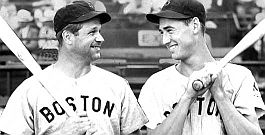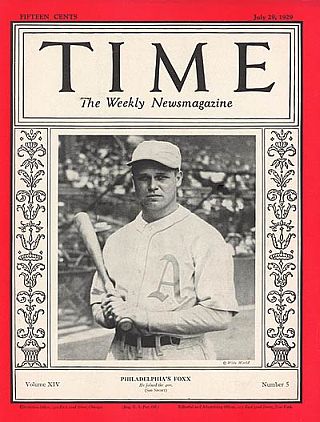
Jimmie Foxx, 21 year-old baseball star of the Philadelphia Athletics, featured on Time magazine cover, July 29, 1929. Click for collectible copy.
On Wall Street, the stock of the Radio Corporation of America (RCA) was setting records in 1929, rising from $100-to-$500 a share — a little “irrational exuberance” well before the time when that term would be used to describe another frothy market; the dot-com bubble of the 1990s.
New businesses in the fields of communication, publishing, news, and entertainment were then on the rise. CBS, Business Week, and Walt Disney were among the emerging enterprises of that day. Talking motion pictures, only a few years old, had become the dominant movie form.
In May, Hollywood’s first Academy Awards were made in a ceremony that lasted less than a half hour. Wings took the Best Picture award. Across the nation, good times were still rolling along practically everywhere through mid-year.
Although there may have been a few insiders on Wall Street who saw the economic storm clouds gathering, and there had been a jolt or two in the market in March, there was little hint of the prolonged ill wind to come, especially on Main Street. The market peril and crashing stocks would not arrive until late October. In fact, for most of the year, the nation was simply going about business as usual. And nothing was more business-as-usual than baseball.
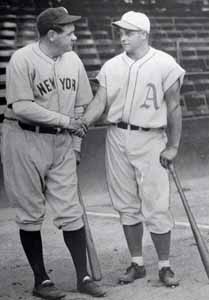
Babe Ruth, left, in Philadelphia, Pa. on Sept. 21, 1932. Ruth had set the home run record in 1927 at 60, but in 1932, Jimmie Foxx almost caught him with 58. (AP Photo)
Time’s Cover Story
In late July, Time magazine ran a baseball cover story about the changing nature of the game, assessing teams and players at mid-season. Featured on the cover was a young player from the Philadelphia Athletics named Jimmie Foxx, who would also get a share of the ink in Time’s cover story.
Baseball by then was the nation’s major national pastime and its biggest commercialized sport. But one concern in the game at the time was whether the ball had been juiced, as there had been a noticeable increase in hitting since the games of the 1910s.
In 1912, “home run” Baker, as he was called, had set the record for round trippers at 13; in 1927, Babe Ruth hit 60. Spalding, the manufacturer of baseballs, insisted the “juiced ball” theory was a myth, but the debate continued.
Time‘s story also focused on some of the young players creating a sensation that year, among them, 19 year-old Mel Ott of the New York Giants. Up to that point in the season Ott had hit 26 home-runs with a batting average of .324, impressing fans with his speed, outfielding abilities, and strong arm.
But Time reserved its strongest praise for Jimmie Fox, described as “even more sensational than player Ott.” Foxx that July was in a neck-and-neck race for the batting title, as he and rival Heine Manush of the St. Louis Browns, both of whom had averages at the time around the .400 level.
Manush had won the American League batting title in 1926 when he was with the Detroit Tigers, hitting .378. But neither he nor Foxx would win the 1929 title. Lew Fonseca of the Cleveland Indians would take the prize, hitting .369. Still, Foxx hit a very good .354 average that year with 33 home runs.
Farm Boy Foxx
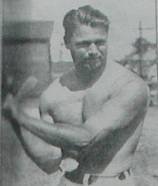
Foxx shirtless: farm-boy build
Foxx was a strong farm boy, from Sudlersville, Maryland; he stood just under six foot weighing in at about 185-pounds with a good build. He described for Time, with some farm-boy bravado, how life on the farm prepared him for baseball:
…I worked on a farm and I am glad of it. Farmer boys are stronger than city boys. When I was 12, I could cut corn all day, help in the wheat fields, swing 200-pound bags of phosphate off a platform into a wagon. We had games on the farm to test strength and grip. A fellow had to plant both feet in half a barrel of wheat and then pick up two bushels of wheat or corn and balance them on his shoulders. Another trick was to lift a 200-pound keg of nails without letting the keg touch your body. I could do that easily but I never realized then it was helping me train for the Big Leagues.
|
Rare Hitting Feat The year 1929 also marked another extraordinary hitting performance which occurred at Philadelphia’s other team, the National League’s Philadelphia Phillies. The Phillies that year had a player named Lefty O’Doul, acquired in a trade with San Francisco. O’Doul would hit .398 for the Phillies in 1929, winning the National League batting title. He also had 32 home runs, 122 runs batted in and scored 152 runs. But O’Doul’s extraordinary feat that year was his 254 hits in a single season — a rare feat equaled or exceeded only by four other players in professional baseball history: George Sisler of the St. Louis Browns in 1920 with 257 hits; Bill Terry with the New York Giants in 1930 with 254 hits; and Ichiro Suzuki of the Seattle Mariners, who holds the record with 262 hits set in 2004. |
Foxx became known as a good hitter and also for his prodigious home run shots. He hit drives that soared over the roof of Philadelphia’s old Shibe Park Stadium, and was the only man up to that time to hit a ball over the centerfield wall there, 468 feet from home plate. He had also become the only man to hit two homers over the roof of Chicago’s Comiskey Park, both of which went some 500 feet, plus. In New York’s Yankee Stadium, Foxx sent one of Lefty Gomez’s pitches into the third deck. Time was right about featuring the up-and-comer on its July 1929 cover. Foxx would go on to have a Hall of Fame career.
Foxx Chases Ruth
In 1932, Jimmie Foxx hit 58 homers and might well have matched or broken Babe Ruth’s record that year with 60 or 61, but he fell off a ladder at home and missed the last few games of the season. In 1933, he took the American League Triple Crown with 48 homers, 163 RBI and .356 batting average.
When Jimmie Foxx retired in 1945, he ranked No. 2 on the all-time home-run list with 534 home runs, behind only Babe Ruth. He also had 1,922 runs batted in and a lifetime batting average of .325. He won three MVP awards and his 12 consecutive seasons with 30 or more home runs was a major league record that stood for more than 60 years until broken by Barry Bonds in 2004. He also held the record for the youngest player (32 years old) to hit 500 career home runs until eclipsed by Alex Rodriguez of the New York Yankees in August 2007, then a younger 32 year-old.
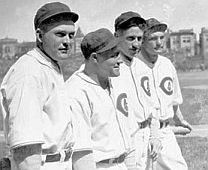
The A’s faced the Chicago Cubs in the 1929 World Series, including from left: Rogers Hornsby, Hack Wilson, Kiki Cuyler, and Riggs Stephenson, shown at Wrigley Field.
1929 World Series
In the 1929 World Series, Foxx and the Philadelphia Athletics, with their American League pennant-winning record of 104 wins and 46 losses, played the Chicago Cubs of the National League, with their season record of 98 wins and 54 losses. Both teams had sell-outs for their home games by late September 1929, with one report noting the Cubs organization had taken in $1.2 million for tickets for its games.
The first two games were played at Wrigley Field in Chicago on October 8th and 9th, and the last three at Shibe Park in Philadelphia on October 11th, 12th and 14th. Notable perfor- mances in that series came in Game 1 with aging A’s pitcher Howard Ehmke setting a record of 13 strikeouts that stood until 1953 when Carl Erskine broke it with 14. Jimmie Fox hit one home run in Game 1 and 2 more in Game 2, becoming the first major leaguer to homer in his first two World Series games.

A’s Al Simmons crossing home plate during the 10-run 7th inning of game 4 in the ‘29 Series. Jimmie Foxx, facing out, awaits his turn to hit.
“Mack Attack”
But in game 4 of the Series in Philadelphia, the famous “Mack Attack” of the A’s occurred, named for the A’s legendary manager, Connie Mack. In that game, the Athletics overcame an eight-run deficit by scoring ten runs in the 7th inning after Cubs’ center fielder Hack Wilson lost a fly ball in the sun resulting in a bases-clearing, inside-the-park home run.
The A’s went on to win that game and the World Series. It was perhaps one of the last big hurrahs for the “Roaring Twenties,” an era that had also been characterized by major sports accomplishments and major sports personalities.
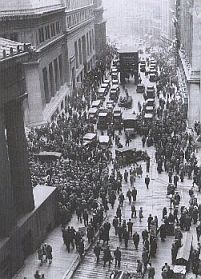
Crowd forms on Wall Street after 1929 crash.
Ten days following the World Series, on October 24th, 1929 in New York, a day known in financial lore as Black Thursday, the Stock Market began its catastrophic plunge. The euphoria and financial gains of the great bull market were shattered that day, when share prices on the New York Stock Exchange collapsed and continued to fall at an unprecedented rate. On October 28 and 29 — Black Monday and Black Tuesday, as they came to be known — the decline was even worse, precipitating widespread panic. The stock collapse continued for a month, sending many investors to financial ruin and marking the onset of hard times. The country and much of the world then fell into a deep economic depression which continued for years. By 1932, Wall Street stocks were worth only 11 percent of what they had been in 1929.
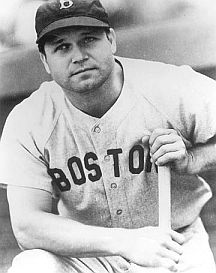
As the hard times of the 1930s wore on, star players like Foxx with large salaries became prime trade fare. Foxx shown here after he went to the Boston Red Sox in 1936.
But even baseball would feel the hard times. By 1933 the average per game national attendance had fallen to below five thousand. Baseball tried to raise interest that year by starting the All-Star game, played at mid-season, when the best players from each league were assembled to play against one another. But as the Great Depression ground on, some owners were unable to pay the salaries of their star players. The Athletics owner, Connie Mack, was obliged to sell off a number of his stars, including Jimmie Foxx. In late 1935, Mack sold Foxx’s contract to the Boston Red Sox. Foxx then played in Boston for a time, as a teammate of an up-and-coming youngster named Ted Williams. But Foxx himself still had a few good years ahead.
Boston Power
With Boston in 1938, Foxx had a phenomenal year: he hit 50 home runs and drove in 175 runs with a batting average of .349. He narrowly missed the Triple Crown but did garner that year’s MVP award. In 1939 he had another good year, hitting .360. His 50 home runs at Boston would remain the single-season record for that team until David Ortiz of the Red Sox hit 54 in 2006. Foxx would finish his career in the 1940s with the Chicago Cubs and Philadelphia Phillies. He was inducted into the Baseball Hall of Fame in 1951.
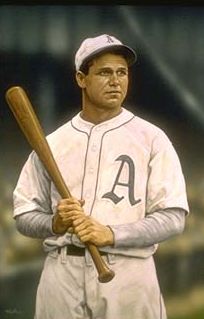
Portrait of Jimmie Foxx in his prime.
See also at this website, the “Baseball Stories” category page for additional stories on other famous players, including: Jackie Robinson, Yogi Berra, Sandy Koufax, Babe Ruth, Mickey Mantle, Christy Mathewson, Stan Musial, Bill Mazeroski, Lou Gehrig, and Honus Wagner. The “Annals of Sport” page has additional sports stories as well. Thanks for visiting – and if you like what you find here, please make a donation to help support the research and writing at this website. Thank you. – Jack Doyle
|
Please Support Thank You |
___________________
Date Posted: 21 February 2009
Last Update: 19 April 2017
Comments to: jdoyle@pophistorydig.com
___________________________________
Sources, Links & Additional Information
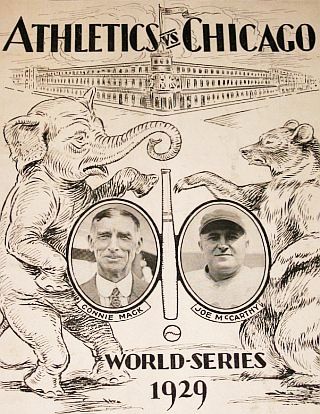
Cover of vintage 1929 World Series program featuring team mascots and photos of Philadelphia Athletics manager, Connie Mack, and Chicago Cubs manager, Joe McCarthy. Click for collectible copy.
“Baseball, Midseason,” Time, Monday, July 29, 1929.
John B. Holway, “Double XX,” BaseballGuru .com.
“Athletics Sold Out for Series; Cub Fans Remit $1,200,000,” New York Times, September 18, 1929, Sports, p. 26.
“Jimmie Foxx,” Wikipedia.org.
PBS, “The Crash of 1929,” American Experi-ence, WGBH, Boston, October 2004.
Associated Press, “Mack Sells Grove and 4 Other Stars; Athletics’ Pilot Breaks up Club in Startling Deals, Receiving $300,000,” New York Times, Wednesday, December 13, 1933, Sports, P.32.
Associated Press, “Red Sox Not to Bid $200,000 for Foxx; Cronin Says Boston Prefers to Spend Money Asked for the Star on Younger Players,” New York Times, Thursday, October 3, 1935, Sports, P. 32.
“Foxx to Sox,” Time, Monday, December 23, 1935.
Mark R. Millikin, Jimmie Foxx: The Pride of Sudlersville, Scarecrow Press, September 2005, 304pp.
W. Harrison Daniel, Jimmie Foxx: The Life and Times of a Baseball Hall of Famer, 1907-1967
McFarland & Company, September 1996, 256pp.
Gregory H. Wolf, et. al., Winning on the North Side: The 1929 Chicago Cubs, Society for American Baseball Research, January 2015, 314pp.
Roger Snell, Root for the Cubs: Charlie Root and the 1929 Chicago Cubs, Wind Publications
April 2009, 280pp.
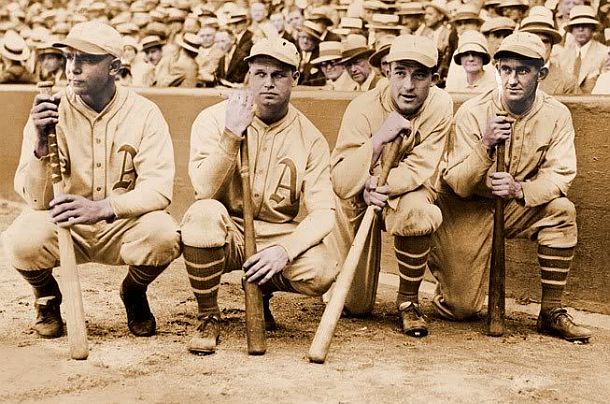
Philadelphia Athletics players, Bing Miller, Jimmie Foxx, Al Simmons, and Mickey Cochrane pose for photo prior to Game 1 of the 1929 World Series against the Chicago Cubs.
